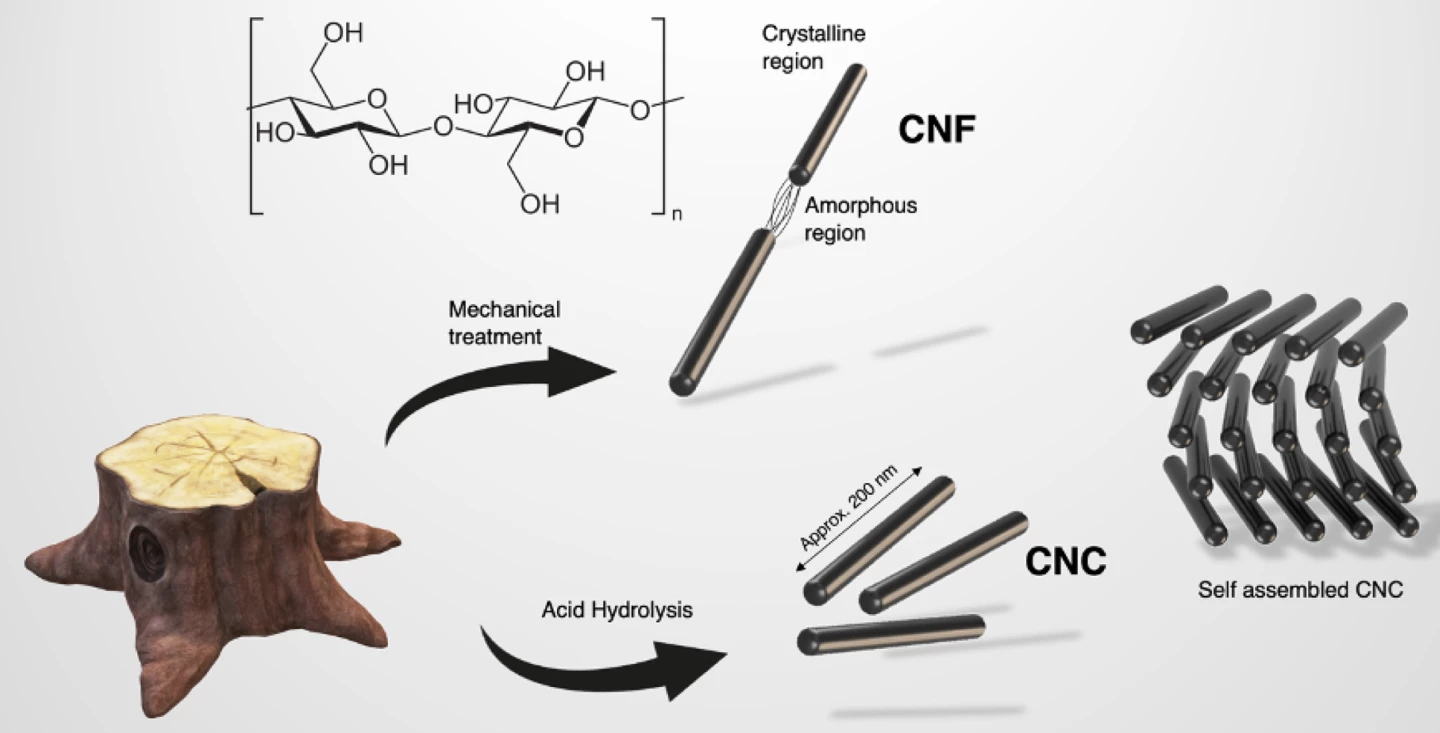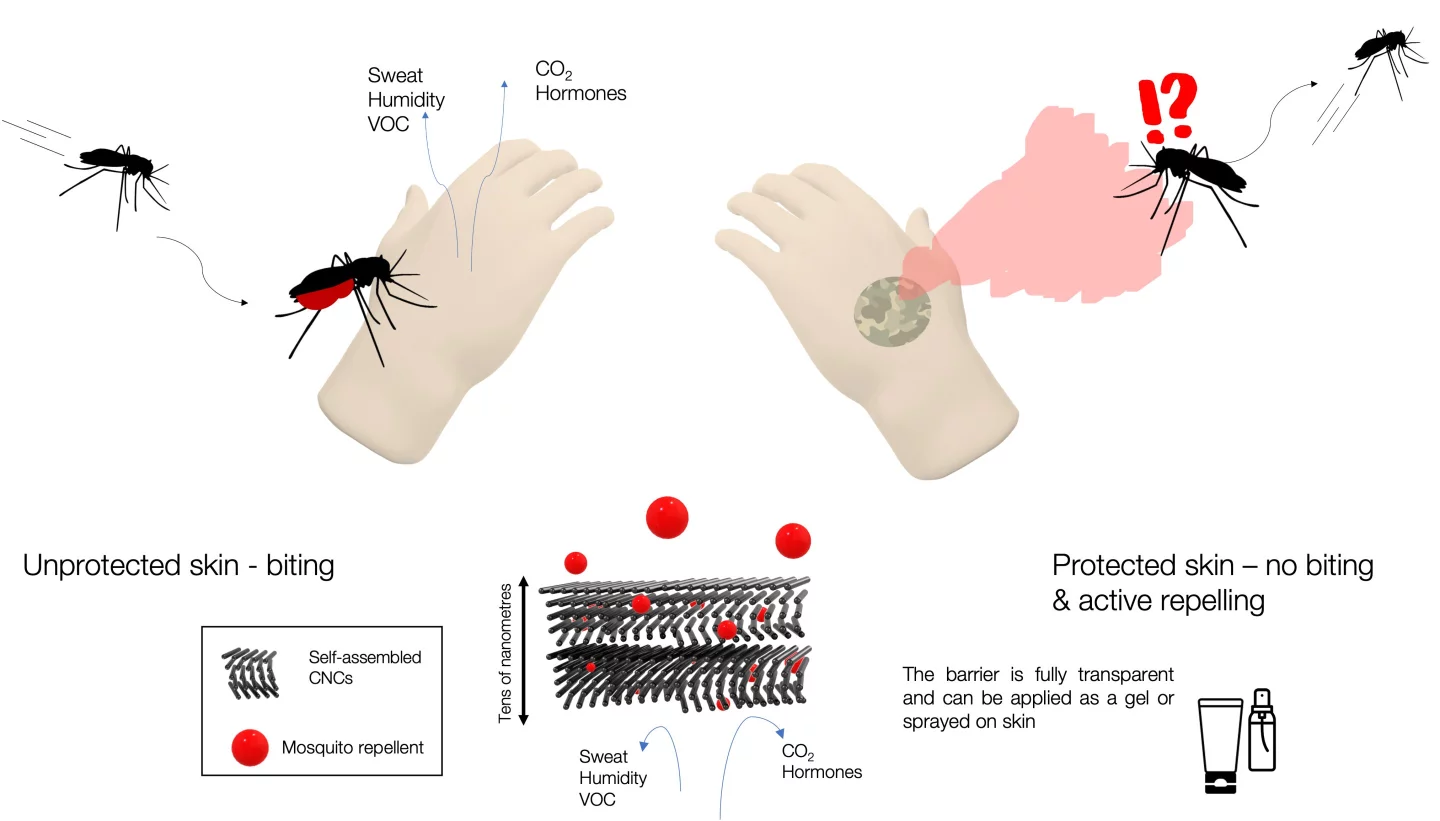Mosquitoes are responsible for around 350 million human illnesses every year, with the number sure to increase as climate change bolsters the disease-carrying insect's numbers. A recent study even showed how another human impact, light pollution, may be responsible for extending the mosquito blood-drawing season.
New research into bite-protection has taken a readily available natural molecule, cellulose, and manipulated it to produce a product that saw an 80% reduction in mosquito feeds on human skin.
Cellulose, which is cheaply and abundantly sourced from the likes of wood industry waste, plus local food and paper waste, assembles into nanocrystals when treated with sulfuric acid. These cellulose nanocrystals (CNCs) assemble as a strong but transparent barrier film.
Scientists found that when mixed with water and a small amount of glycerol, these CNCs could be applied to the skin in a spray or gel and block the mosquito’s ability to bite through it to draw blood.

Adult female mosquitoes need blood from humans or animals to produce eggs, so a large reduction in this food source, particularly in highly populated areas, could have a positive impact on controlling the insect’s numbers.
CNCs and the efficient barrier they form have been in development for a wide range of ‘green’ uses, such as in soundproofing, removing dye from textiles and making strong binders like superglue and composite materials as tough as bone.
In trials with live Aedes aegypti mosquitoes, lead researcher Daniel Voignac from The Robert H. Smith Faculty of Agriculture, Food and Environment, The Hebrew University of Jerusalem and colleagues tested CNC-treated and non-treated hands, exposing skin for 10 minutes inside an enclosed cage of mosquitoes that contained an average of 15 females.
The result was the thin film of CNC gel acting like a chemical camouflage, with a drop of 80% in bites compared to a hand exposed to the insects without the biomaterial barrier.

Further studies showed that the CNC coat also blocked the passage of ammonium hydroxide vapor – a common mosquito attractant – when it was applied to filter paper and exposed to the insects.
The widespread Ae. Aegypti and Ae. Albopictus species are vectors for more than 22 serious arboviruses, including dengue, chikungunya, Zika, Japanese encephalitis, Rift Valley fever, yellow fever and West Nile viruses.
While in a preliminary stage, the research shows promise for the development of cheap, transparent natural compounds that could block the emission of the skin's chemicals that alert female mosquitoes to a blood feast. Green, inexpensive and scalable, it has the potential to push back against the worldwide problem of mosquito-borne illness.
The research is published in the journal PNAS Nexus.









